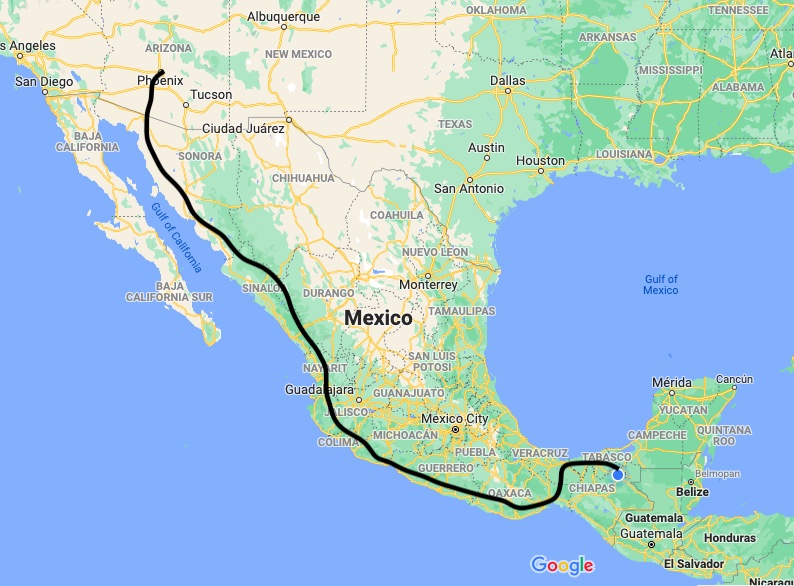The internet here has been elusive. When I do get a hotel it may or may not have wifi. If they do it is spotty at best. So it has taken me a few weeks to upload a short video to youtube showing a scene in Cuyutlan, Colima, shot before Christmas. I had rolled into town and got a hotel near the center. That night I heard music and people bustling about so I investigated and there was some sort of festival going on so I shot some video. Then as usual I had to eat something so I filmed a guy making a gringa, one of my favorite Mexican dishes.
In Mexico they have what are called “auto hotels” or “motels”. These are distinctly different from regular “hotels”. They typically rent for 4 hours and are meant to be discreet places you can spend time with your sweetheart. They are so discreet in fact that you don’t even have to see an employee face to face. You pull into a garage, close the door and in the wall there is a revolving cylinder where the attendant will put the bill. You put your money into the tray, revolve the cylinder and it’s done. You can even order food and drinks this way. There is no key and you just drive away when done.
At first I was a little disgusted by what I considered to be a sleazy sex motel but after staying in a few I have started to like them. They are usually bigger then a regular hotel room and very clean. This makes sense. If you are trying to impress your sweetheart you want to bring her to a nice place, right? The only problem is they are typically located a few miles outside of the town so there are not many shops or restaurants around.
Here is one that had nice red and green mood lighting and towels arranged into the shape of a heart. How sweet!
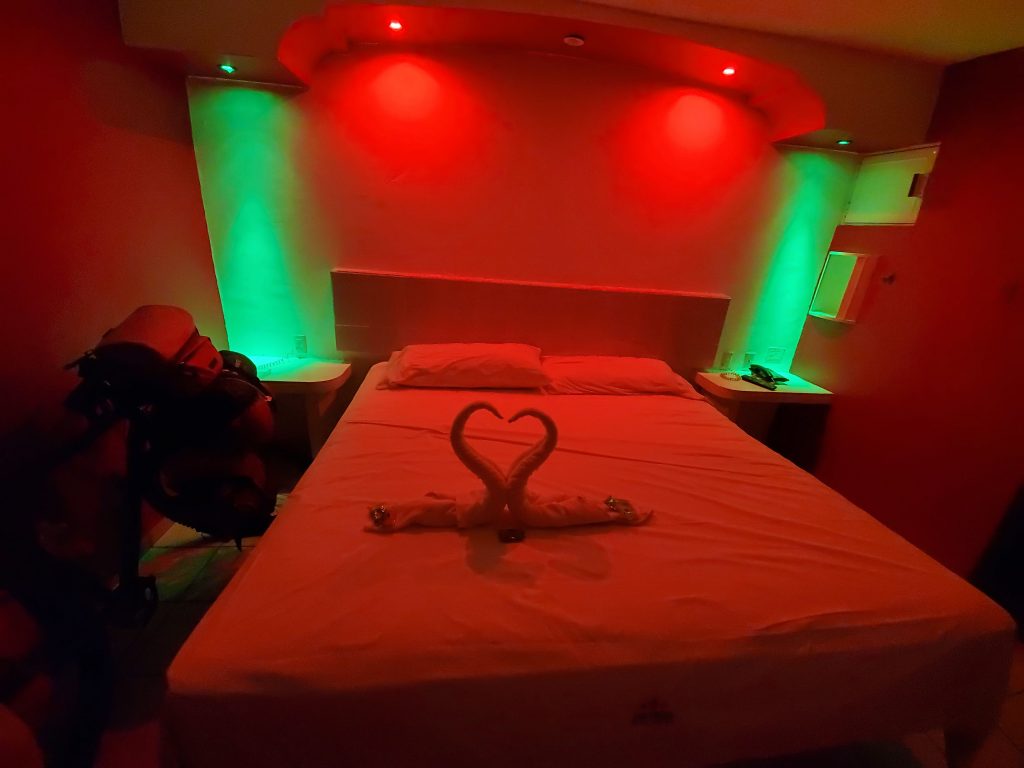
Here is one called PK2. If you speak Spanish you will know what this means. it is pronounced pay kah dos, which sounds phonetically like the word pecados, which means “sins” in Spanish. Haha, clever play on words I guess.
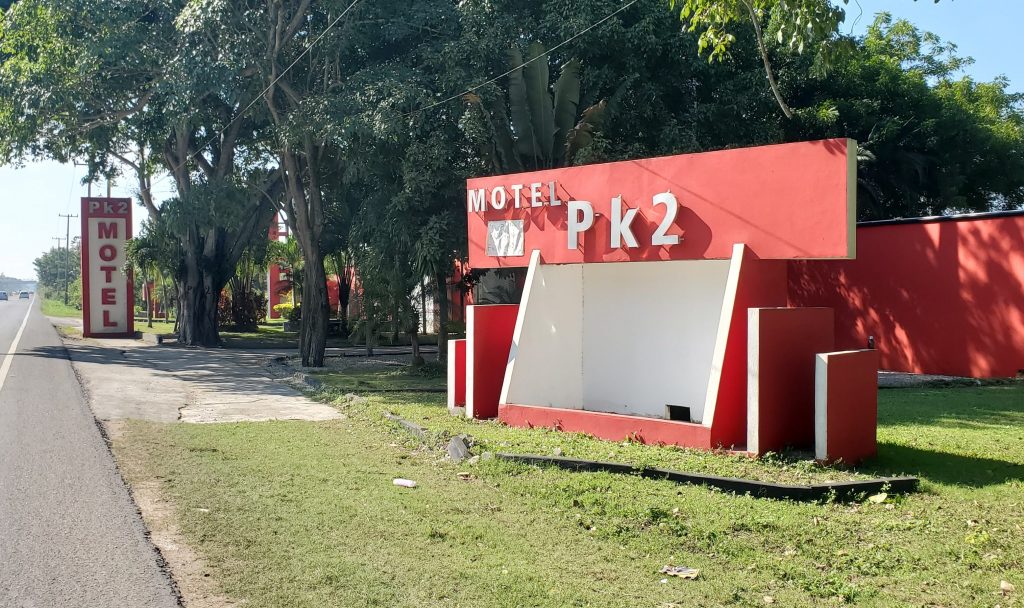
More garbage. Did I mention Mexicans don’t pay much attention to rules? This sign says, “Prohibited to throw trash in this area.” Right.
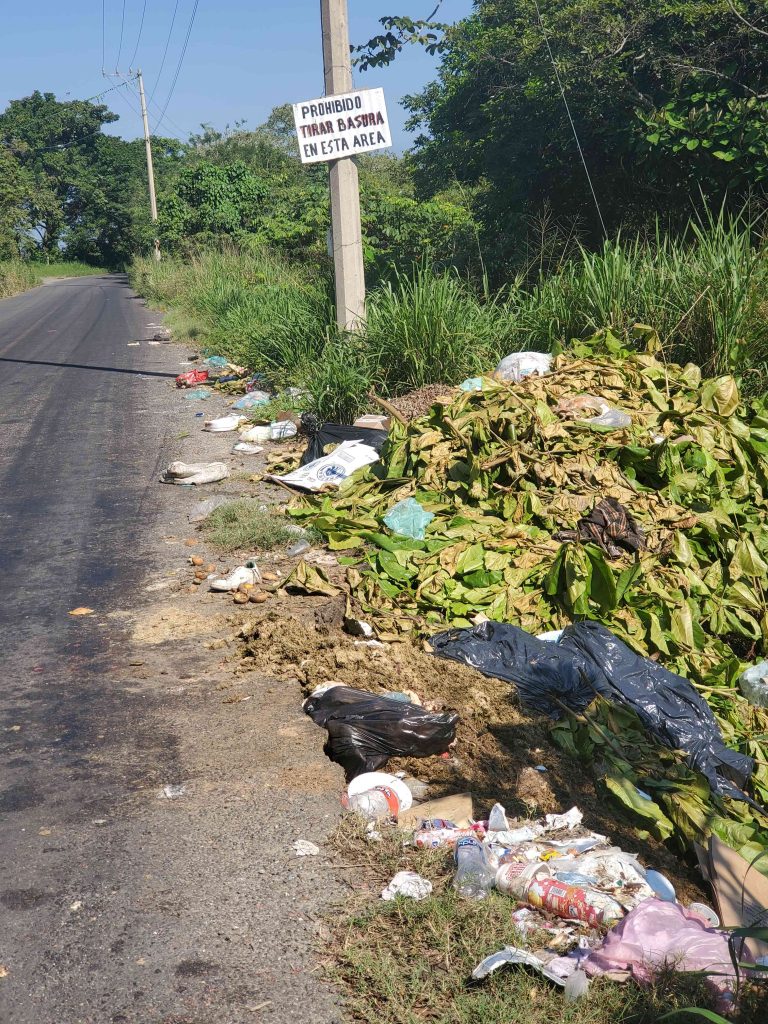
Made it out of Veracruz and into Tabasco state. A shot of the highway. Nice shoulder.
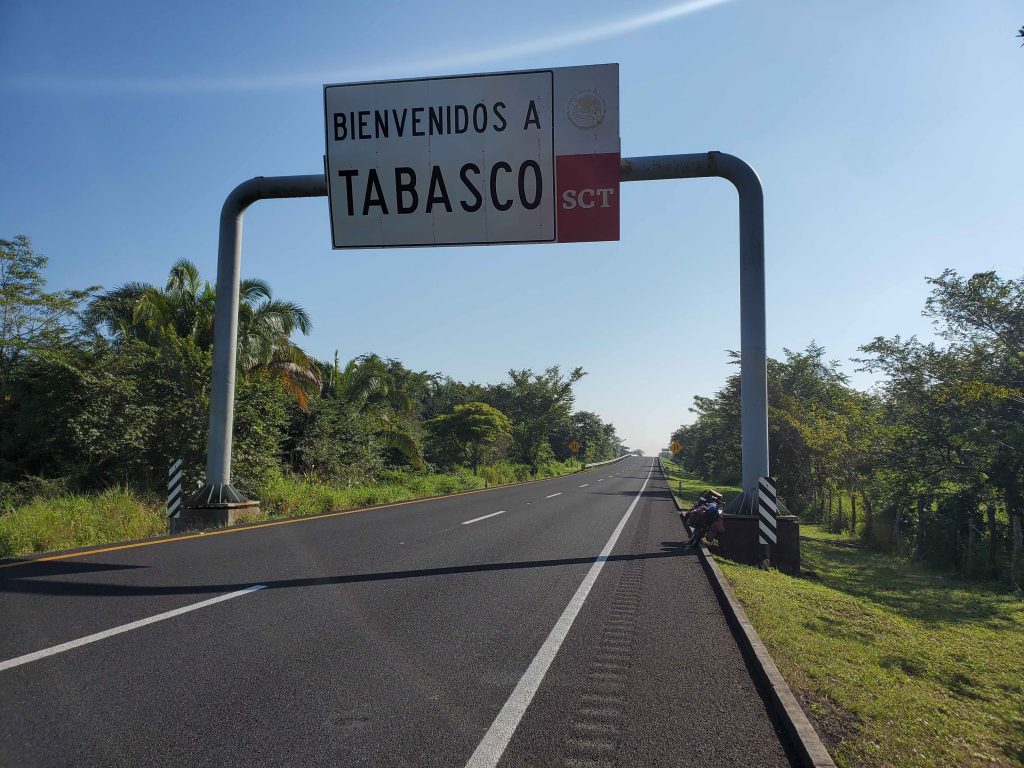
As I headed northeast I rode along the Gulf coast for a day or two. I ended up camping right on the beach one night. It’s not as great as it sounds. It was very humid, and sand gets into everything. But it is nice going to sleep with the sound of waves crashing.
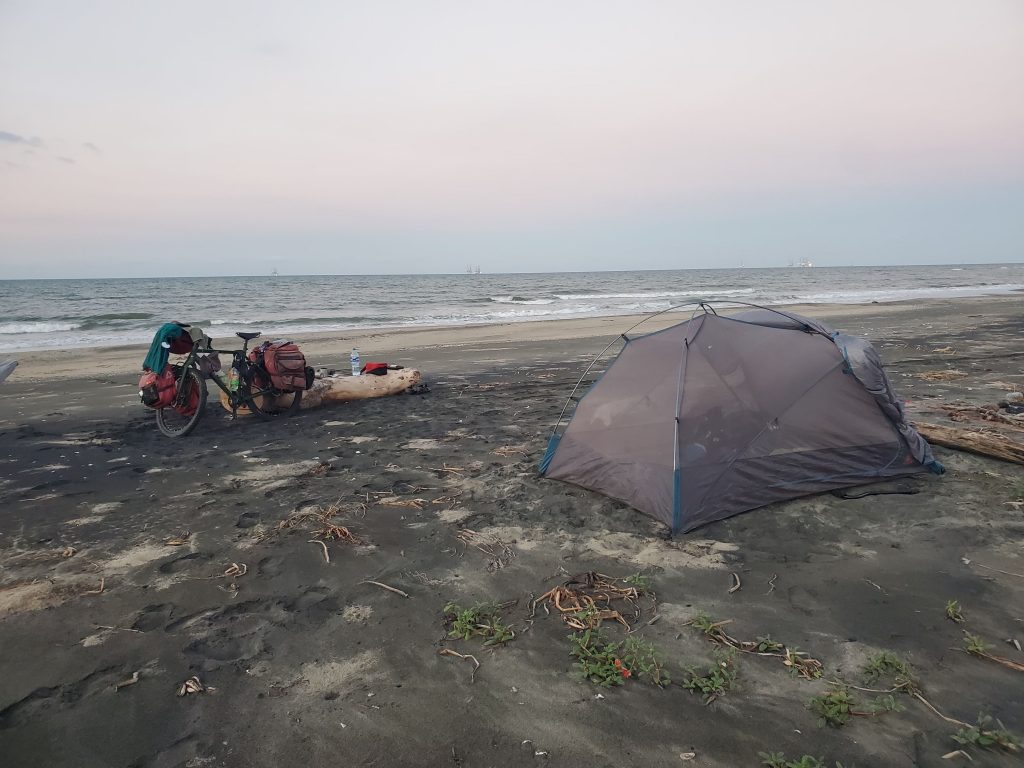
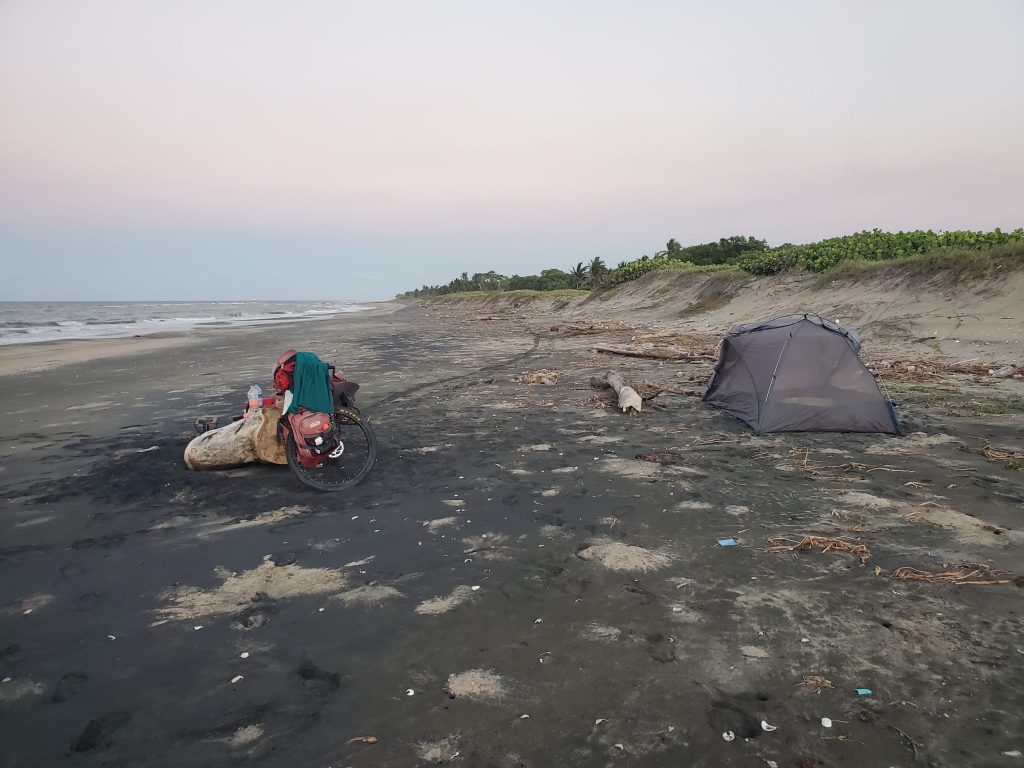
Typical cemetery in Mexico.

It is very hot and humid in Tabasco. I am drenched in sweat after 2 minutes. Here is the 5 day forecast one day from Comalcalco.
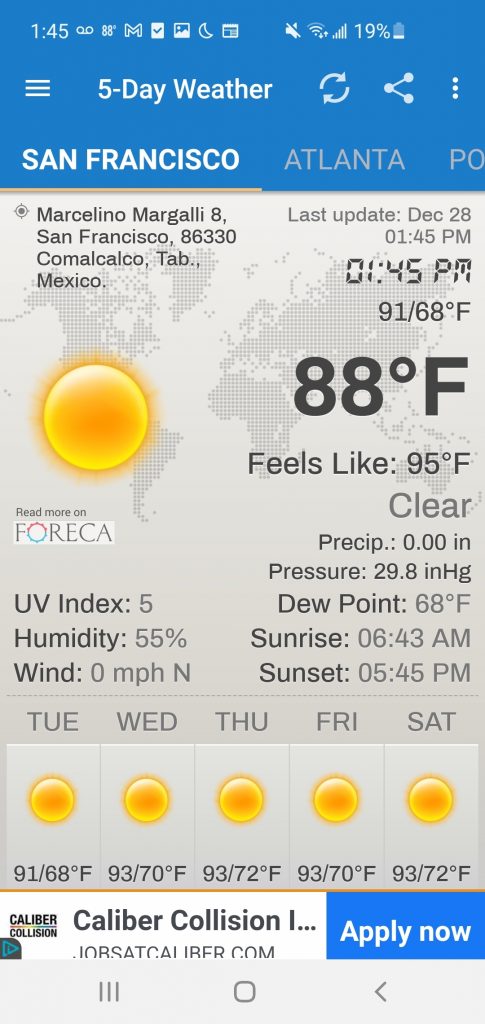
I’ve had a troubling clicking sound from somewhere for the past few weeks whenever I pedaled. I could not figure out what it was but then I realized it was something to do with my bottom bracket, which houses the bearings for the main drive system and where the pedal arms attach. I also had trouble with my tubeless rear tire. Sealant kept leaking out and it would not seal. So I had to put in a tube. I decided I needed to go to Villahermosa, a bigger town that would have a bike shop to fix my problems. Sure enough, the mechanic removed the bottom bracket and the bearings were worn out. So he rebuilt it with new ones. I also got more sealant for the tubeless tires. Here’s the mechanic at work on my bike.
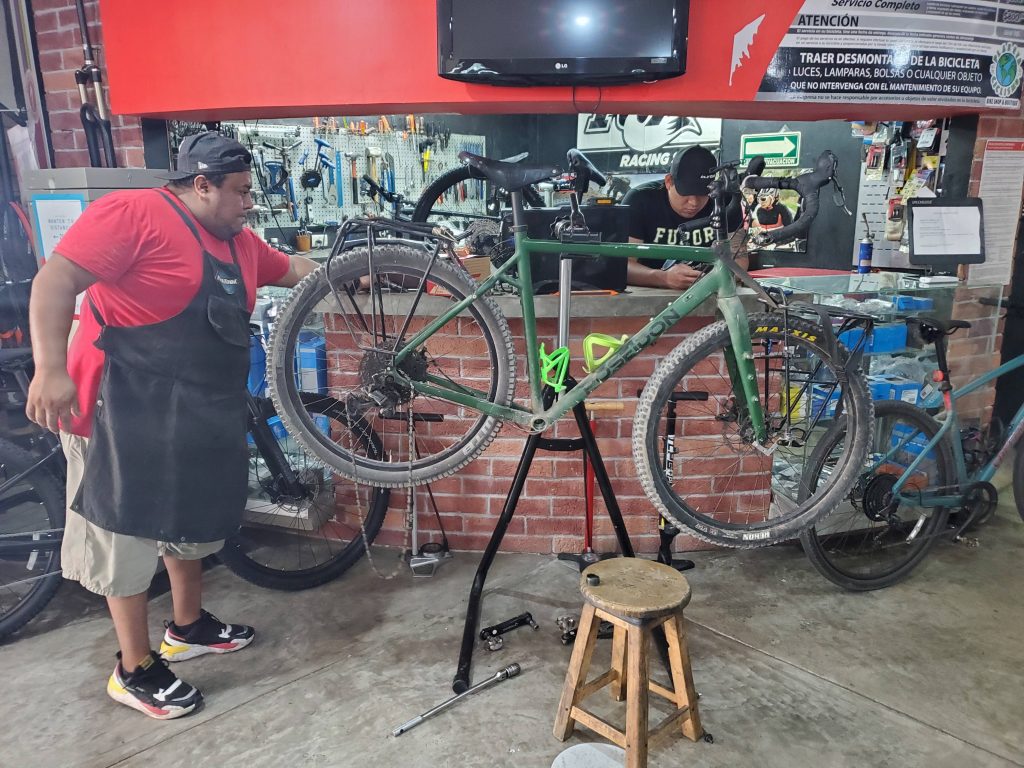
The traffic in parts of Villahermosa was awful. Gridlock with hundreds of horns blaring. I took this photo on a bridge overlooking the chaos.
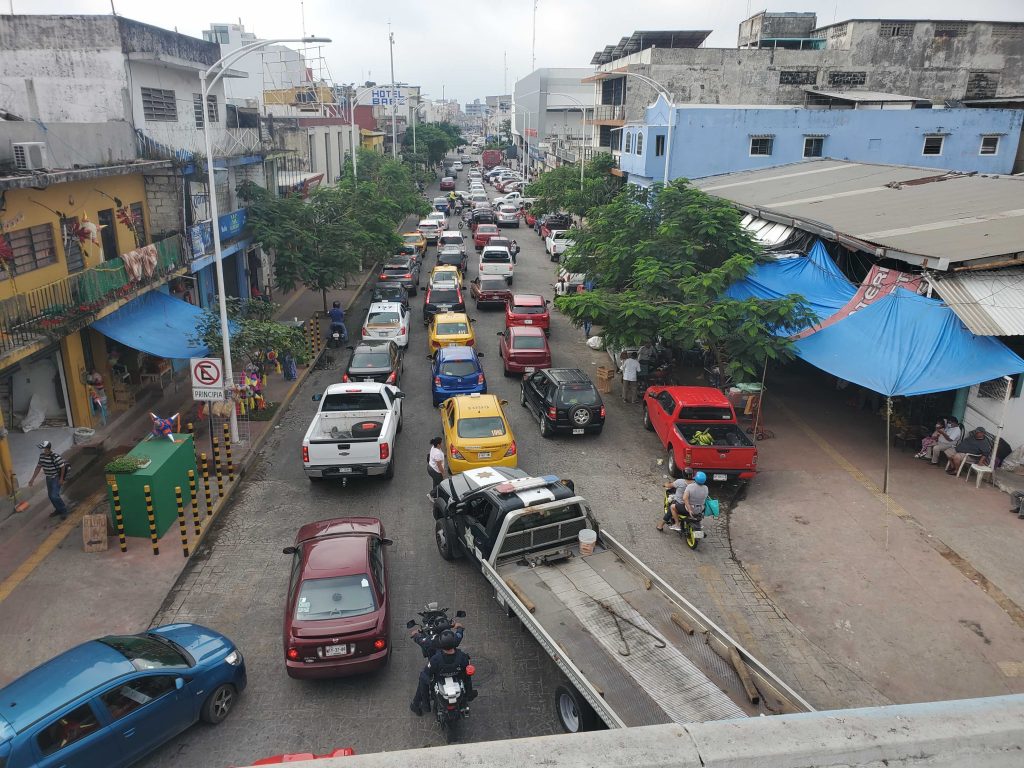
The Mexican state of Tabasco is thought to have been named after a Mayan Chief called Tabscoob. He ruled the area until defeated at the battle of Centla by Hernan Cortes in 1519. Here is a statue of him outside of Villahermosa. I think he looked pretty fierce. I’d hate to have to face him in battle.

I had two people give me free food one day. I had left Villahermosa and was heading toward Macuspana when I stopped at a convenience store. This woman, Ruth, offered me some fruit juice and free tacos of chicken or pork. She was really nice. Her daughter Dora in the truck was helping her. She said she comes every day to that spot to sell tacos to people who stop. They were delicious.
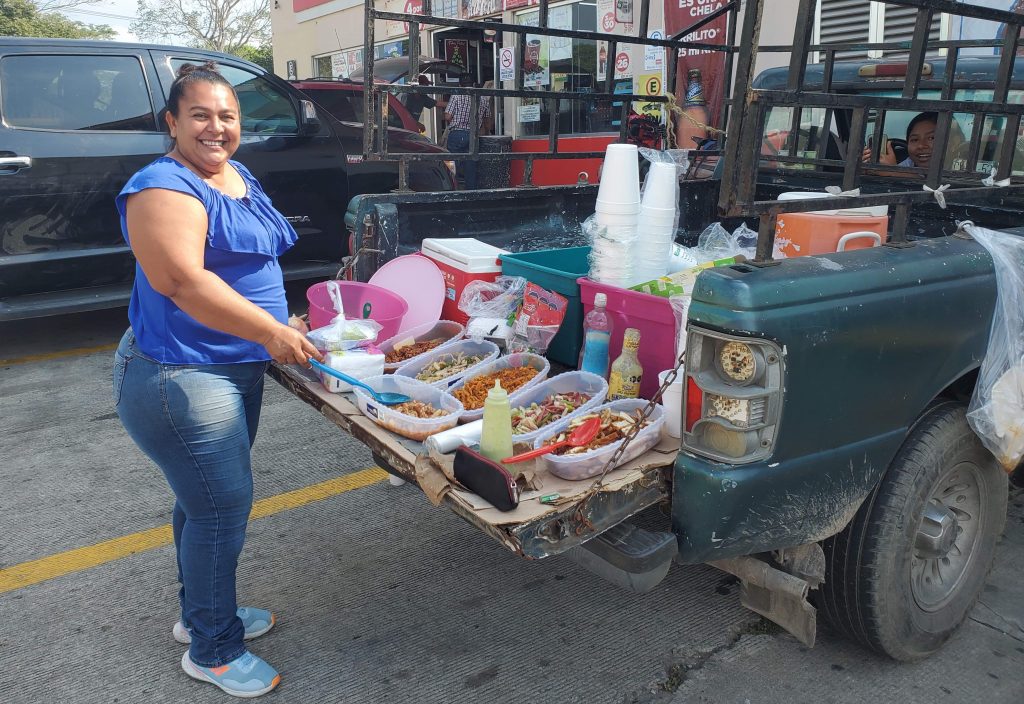
Then I passed by a toll both and there are always vendors selling stuff. This guy, Alejandro, flagged me down and gave me a packet of his peanut bars, no charge. Nice guy!
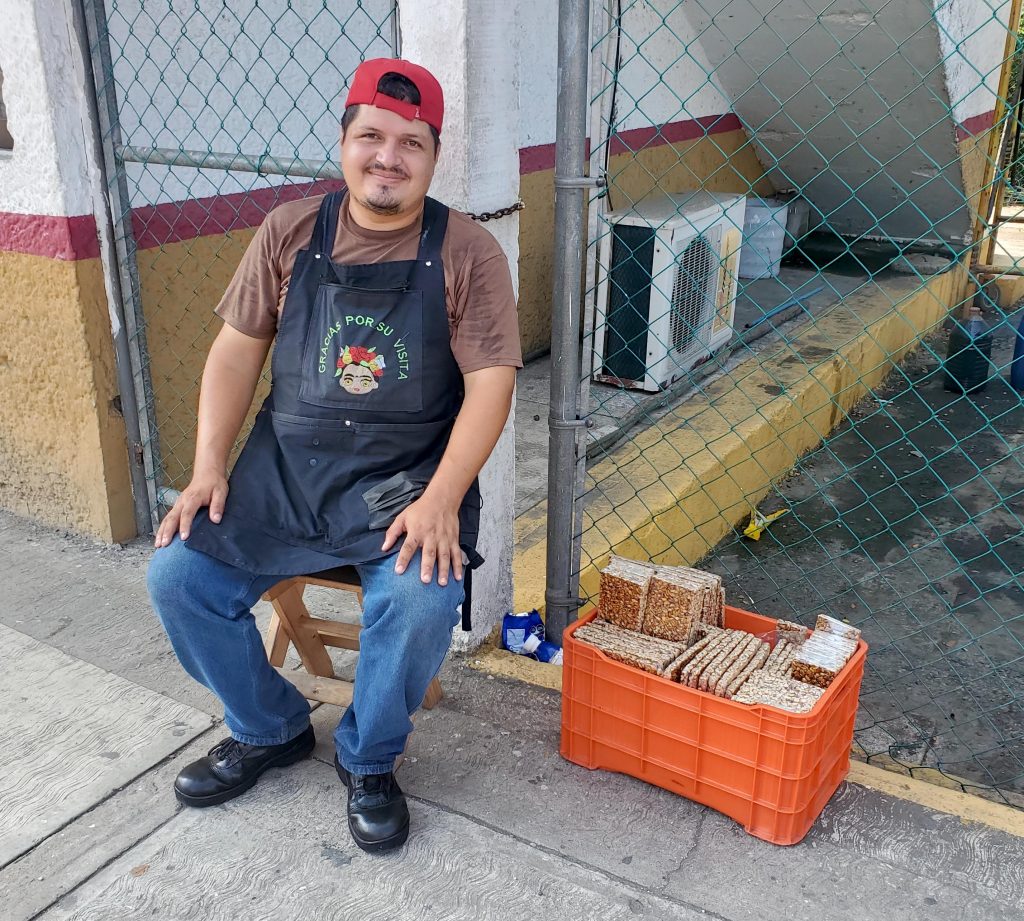
After Villahermosa I made way to the town of Palenque, known for the mayan ruins nearby of the same name.
I’m telling you, smartphones have made bicycle touring so much easier. Besides the obvious things like GPS, the fact I can get weather updates instantly has made the trip far more comfortable. In the past I would have to find a newspaper and get the weather forecast, which was hardly reliable. Now, I check the weather and see, oh, it is going to rain all day on Jan 3. I better make sure I am in a good hotel. So that’s what I did. I arrived in Palenque on Jan 2. and sure enough, it rained all day and all night on the 3rd. I could hardly go out even with my rain jacket on; the streets were just flooded. So I just stayed in my room watching the Lord of the Rings and Ted Lasso and eating bad pizza.
But the next day, as predicted, things cleared up, so I visited Palenque. Palenque is a Maya UNESCO Heritage site thought to have been populated from 226 BC to around 799 AD. The settlement flourished in the 7th Century under the rule of Pakal. The city is surrounded by cedar, mahogany, and sapodilla trees and is hot and humid with frequent mists. Palenque is a mid-sized settlement that is smaller than Chichen Itza and Tikal with 1,400 documented buildings, but less than 10% of the city has been excavated. At its height, Palenque dominated parts of five countries; Belize, El Salvador, Guatemala, Honduras and Mexico. The buildings are historically significant for its extensive hieroglyphics that tell stories and show historical facts.
In 711, Palenque was taken over by Toniná and no new construction was started after AD 800. The Spanish first arrived in the 1520s and found small communities living throughout the grounds of the settlement.
Here is the Temple of Inscriptions. This temple is perhaps the most significant structure on the site. It is a constructed monument built by King Pakal’s first son. King Pakal was appointed the Ruler of Palenque by his mother, Queen Sak Kuk, at the age of 12 years old. Pakal the Great reigned in Palenque from 615 to 683 A.D. and was thought to be the most significant ruler of the city. Upon his death, his first son was appointed ruler and ordered the construction of the Temple of Inscriptions.
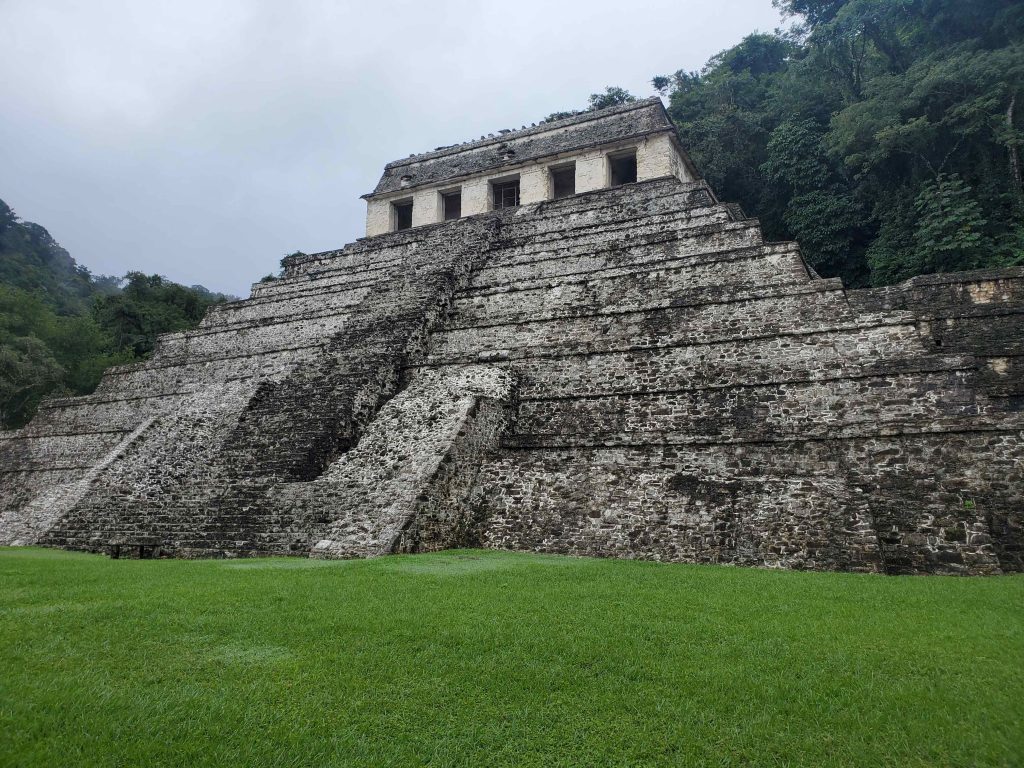
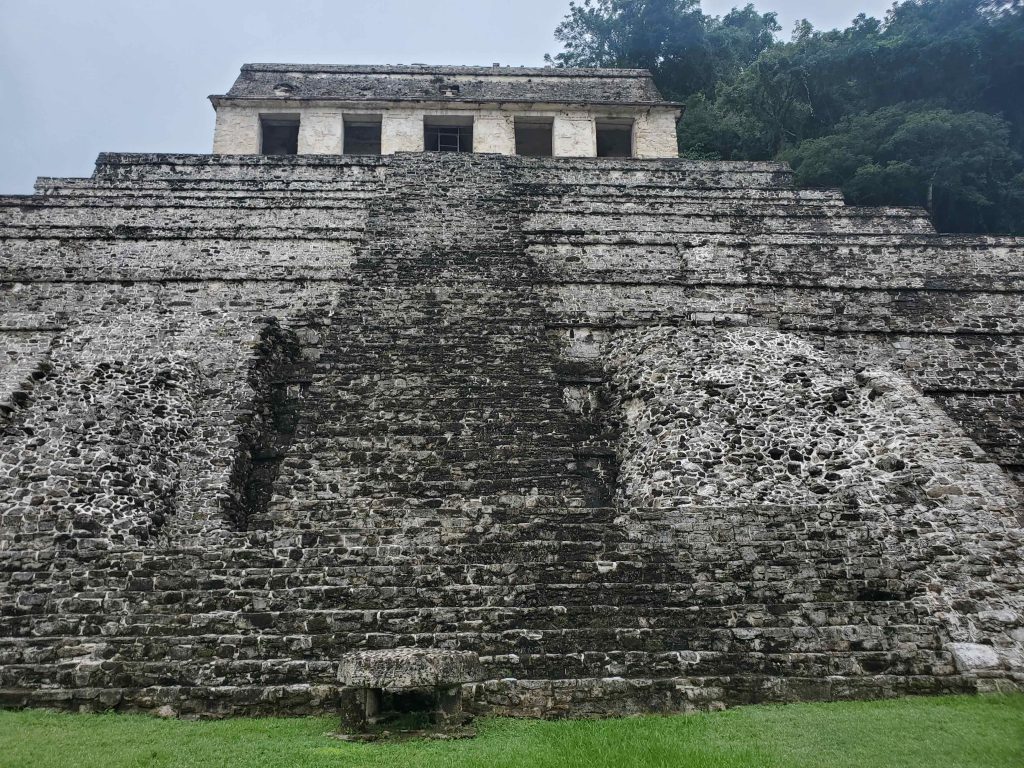
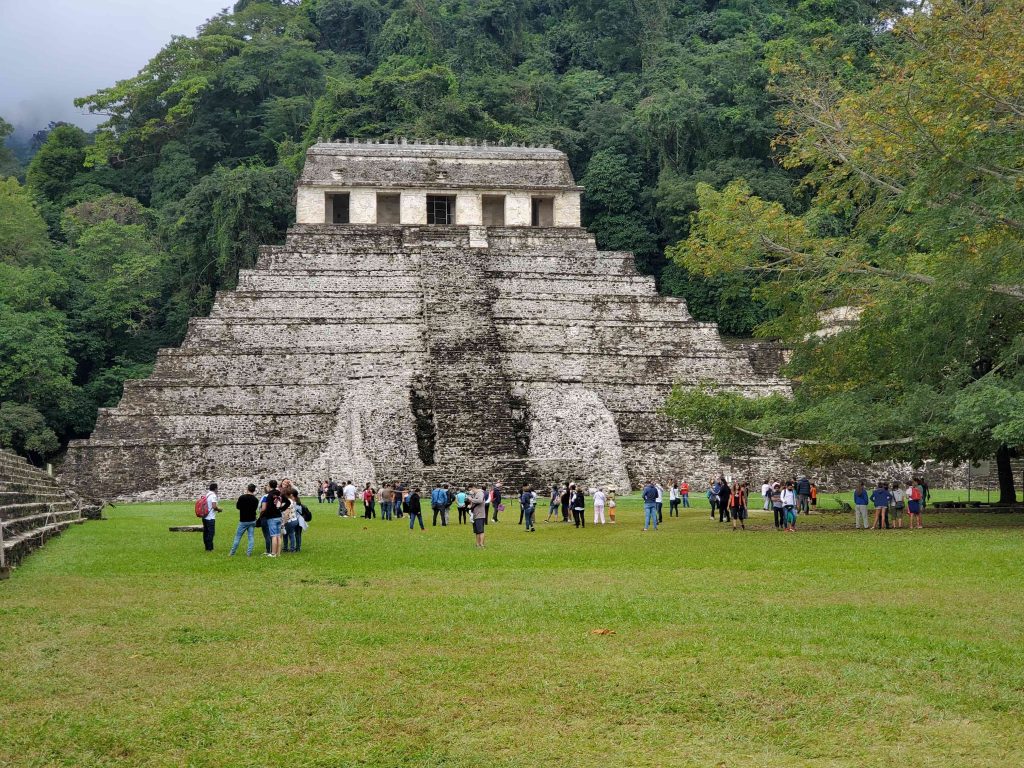
This was the Palace, where the King and his entourage lived.

Palenque is located near a river, so they built aqueducts to control the flow and provide water for the city.
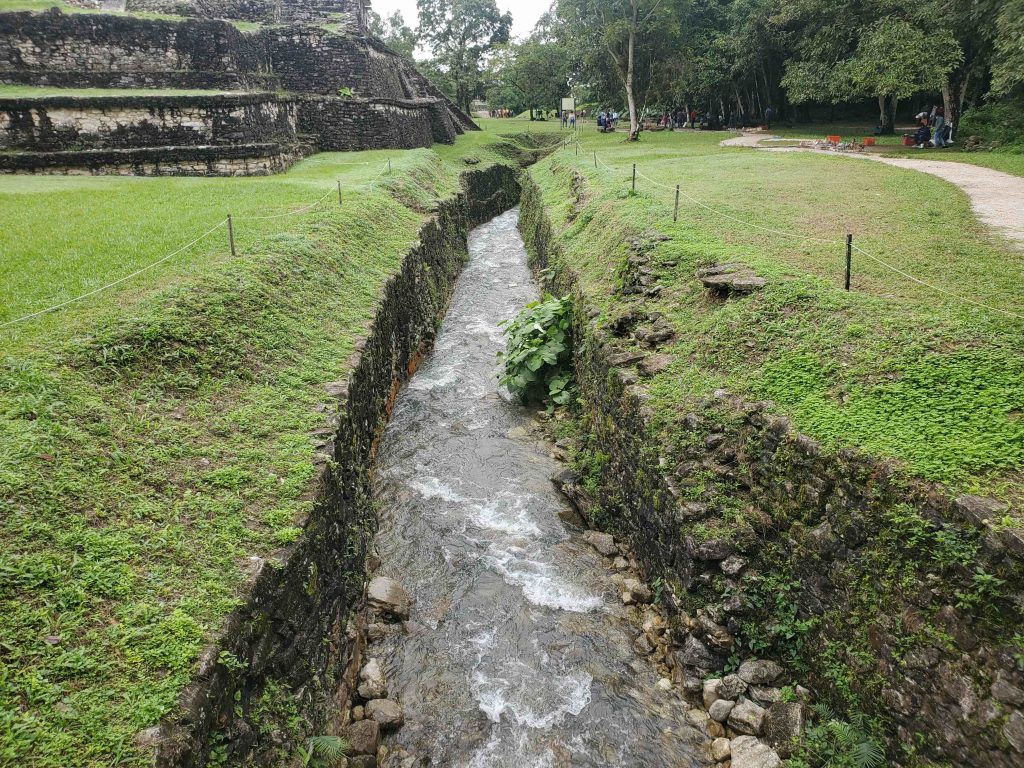
I get frustrated when visiting these old sites though because they have deteriorated to such an extent it’s hard to imagine what they were once like. Often the buildings have been reduced to just a pile of bricks. Not very impressive. So I found on the internet an artist rendering of what Palenque might have looked like in its heyday, around AD 700.
There were the main temples and palace but there also must have been thousands of wooden houses for the regular folks, as well as fields for growing crops.

Here is the Palace and Temple of Inscriptions, among other structures.
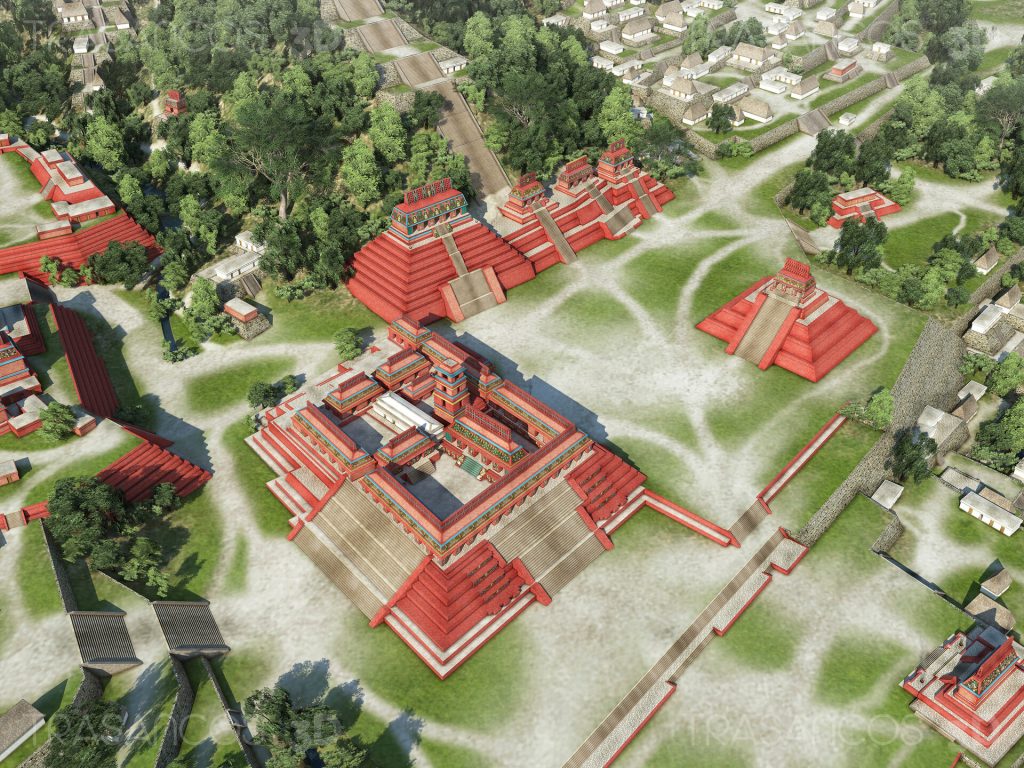
That’s it for now. I am just about finished with this tour. I’ve got 500 km to go in 11 days to get to Merida, where I will stay with family for a few weeks before flying back to Denver. Stay tuned, here is my location.
